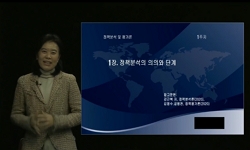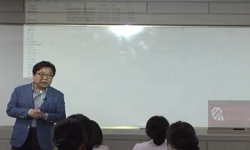Green roofs are an alternative for providing green spaces in urban areas. They are particularly suited to urban areas where it is difficult to establish green spaces due to dense blocks and high land prices, as green roofs can be installed on the tops...
http://chineseinput.net/에서 pinyin(병음)방식으로 중국어를 변환할 수 있습니다.
변환된 중국어를 복사하여 사용하시면 됩니다.
- 中文 을 입력하시려면 zhongwen을 입력하시고 space를누르시면됩니다.
- 北京 을 입력하시려면 beijing을 입력하시고 space를 누르시면 됩니다.
A Study on the Stormwater Reduction Effects of Green Roof Project in Urban Area : : A Case of Bangbae-dong, Seoul
한글로보기https://www.riss.kr/link?id=T13667226
- 저자
-
발행사항
서울 : 한양대학교, 2015
- 학위논문사항
-
발행연도
2015
-
작성언어
영어
-
주제어
옥상녹화 ; 도시유출해석모형(SWMM) ; 비용편익분석
-
발행국(도시)
대한민국
-
형태사항
26 cm
-
일반주기명
지도교수: 김흥순
- 소장기관
-
0
상세조회 -
0
다운로드
부가정보
다국어 초록 (Multilingual Abstract)
Green roofs are an alternative for providing green spaces in urban areas. They are particularly suited to urban areas where it is difficult to establish green spaces due to dense blocks and high land prices, as green roofs can be installed on the tops of pre-existing infrastructures for relatively low cost. Green roofs have been reported to produce beneficial economic and environmental effects. Many municipal governments have developed initiative programmes to encourage the construction of green roofs. The aims of this study are: (1) to investigate whether green roofs mitigate stormwater runoff in urban areas; and (2) to examine whether establishing a green roof system is economically feasible. The study area concentrates on the major flood-prone areas in Seoul in the Bangbae-dong region.
In order to answer the study questions, three scenarios have been subjected to analysis. The first, Scenario A, consists of an unchanged study area reflective of the current conditions in the region. The other two, Scenarios B and C, assume partial and complete green roof constructions. As building rooftops serve many different purposes in cities, it is important to consider the condition of the building rooftops in question.
In this study, two analyses were carried out. The first aimed to identify the stormwater runoff reduction effects of green roofs and used PCSWMM for modelling and simulation. Results from this analysis showed that Scenarios B and C had stormwater runoff reductions of 14.7% and 25.6%, respectively. These estimates correspond with the results of previous studies, and suggest that the stormwater runoff effects of green roofs have been exaggerated in the media.
Second, a benefit-cost analysis was performed to evaluate the economic feasibility of green roof systems. The cost-benefit analysis involved comparing the three scenarios while considering 6 costs and 8 benefits over a period of 20 years. The results suggest that Scenarios B and C are both economically feasible, with cost-benefit ratios of 1.06 and 1.14, respectively. Also, we performed a comparative analysis of green roof and other flood mitigation strategies which suggested that the economic feasibility of green roofs was relatively small.
In sum, this study evaluated the stormwater runoff reduction effects and economic feasibility of green roofs. The results suggests that though the stormwater runoff reduction effects of green roof exist, they are relatively small, and that though economically feasible, other measures may be more effective. The results are relevant as policy data for future green roof initiative projects.












